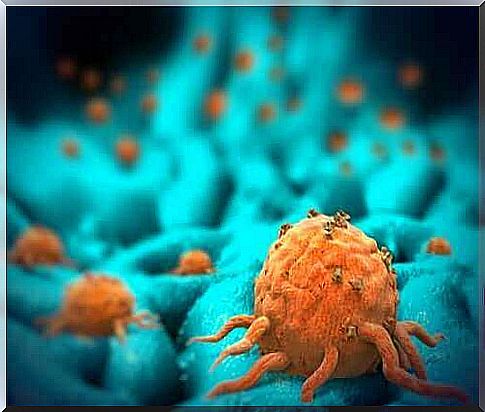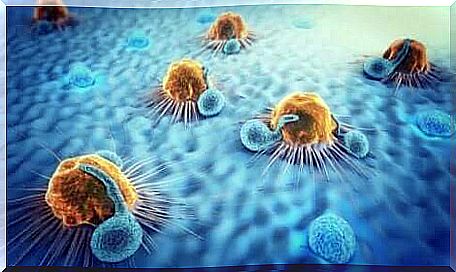Benign And Malignant Tumors: The Difference

Today, the possibility of having cancer is a concern that haunts almost all of us. Currently, cancer is one of the leading causes of death in the world. Therefore, it is normal to be afraid of having a tumor, whether it is benign or malignant.
However, you should be aware that not all tumors are actually cancer. A tumor refers to a collection of cells from every tissue in our body that have multiplied uncontrollably and formed into an abnormal mass.
Due to the importance of the problem of cancer in today’s society, in this article we will explain the main differences between benign and malignant tumors.
The main differences between benign and malignant tumors

Both benign and malignant tumors are pathologies that require extensive study by a group of doctors. In addition, both species must be controlled with an established treatment. This is done to avoid possible complications or bigger problems later on.
Spread
What mainly distinguishes malignant tumors from benign tumors is the spread. In both types, the cells multiply uncontrollably. However, in benign tumors, they do not spread to other parts of the body.
As a rule, benign tumors are not life-threatening. There is a nuance, however, because if they grow too large and press on nearby organs, they can affect them. In such cases, their removal is often necessary.
As for malignant tumors, these have the ability to spread to other parts of the body. In fact, they also tend to grow into an abnormal mass in those areas, a phenomenon known as metastasis. It can be spread by contiguity, through the blood or through the lymphatic system.
In this way, a malignant tumor usually spreads and causes other tumors in different parts of the body. On the other hand, benign tumors usually do not spread because their cells are surrounded by a membrane or wall that encloses them.
Differentiation
Another aspect that makes it possible to distinguish between benign and malignant tumors is the differentiation. Differentiation refers to how much the tumor cells resemble the cells in the original healthy tissue.
- In malignant tumors the cells do not or hardly resemble the original ones. This makes it possible to identify the different stages of the cancer.
- In benign tumors, the cells resemble those of the healthy tissue.
It is also important to know that a benign tumor usually grows more slowly than a malignant one. They may even stop growing. However, this does not happen with malignant tumors.
What does diagnosing cancer involve?

The earlier a tumor is diagnosed, the more likely the treatment will be effective. Awareness is therefore necessary. Self-examination to detect skin changes, nodules and abnormalities is one of the most important early detection measures. Don’t obsess about it though!
If you have had problems in the past, it is essential to see a doctor regularly. From a certain age, it is advisable to have a general check-up. These kinds of measures form the screening methods and enable early detection of tumors. For example, consider the following options:
- In women between the ages of 50 and 75, it is very important to have a mammogram every 2 years to rule out the presence of a breast tumor.
- For men with complaints, examining the prostate by means of a rectal examination by the doctor can be essential.
In addition to early detection, there are other techniques that make it possible to diagnose a tumor when it is more advanced. Imaging tests, such as computed tomography, make it possible to discover the location and size of the tumor. Magnetic resonance imaging (MRI) is also helpful for this.
The only way to properly study the tumor tissue is after taking a biopsy through a biopsy. This makes it possible to assess a piece of the tumor. By means of microscopy it is possible to observe the behavior of the cells. Thus, the degree of differentiation and the rate of proliferation can be assessed.
The treatment of benign and malignant tumors
Treatment depends on the tumor type, location, size, etc. Most benign tumors can be surgically removed. In addition, no radiotherapy or chemotherapy is usually required after the tumor has been surgically removed.
On the other hand, the treatment of malignant tumors is usually more complex. In most cases, doctors combine surgery with cycles of radiotherapy or chemotherapy. Sometimes both are even used to achieve an optimal result. This may be necessary to ensure that malignant cells in any part of the body are removed.
Conclusion on benign and malignant tumors
In the case of a tumor, early detection is very important for the further course. This allows a more effective treatment to be instituted. This is also important in benign tumors. Although these usually do not directly endanger life, early detection can help prevent possible later complications.









